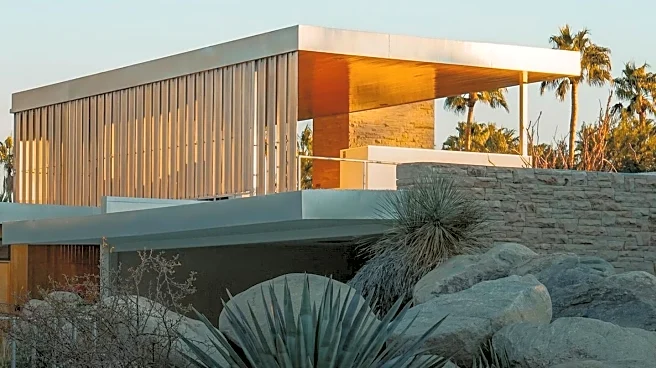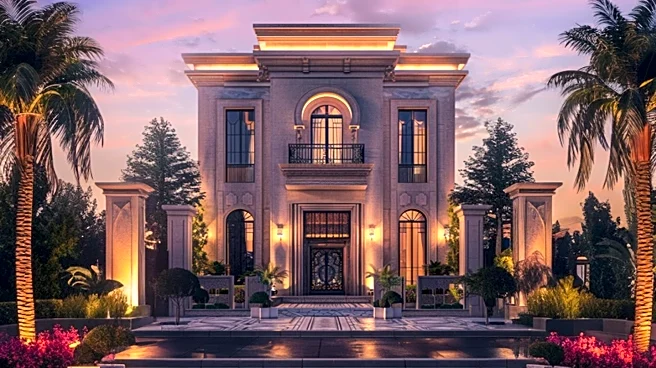What's Happening?
A unique home designed by architect Richard Neutra, part of the Case Study Houses project, is now on the market for $10.5 million. Located in Pacific Palisades, California, the Bailey House was built in 1948 and features three bedrooms, two bathrooms, and ocean views. The home served as a public showcase for Modernist architecture and was part of a project sponsored by Arts & Architecture Magazine to create affordable homes for returning WWII veterans. The property has undergone restorations and is currently owned by serial entrepreneur John Wise. The listing agent describes the home as a masterpiece of architectural detail, offering a deep appreciation for Modernist design.
Why It's Important?
The sale of the Bailey House highlights the enduring appeal of Modernist architecture and its historical significance in the U.S. real estate market. Designed by Richard Neutra, a pioneer of the California Modernist movement, the home represents a pivotal moment in architectural history, where innovative designs were used to address post-war housing needs. The Case Study Houses project, which included designs by other renowned architects, has left a lasting legacy in Southern California, influencing contemporary architectural practices. The property's listing at $10.5 million reflects the high value placed on iconic architectural works, attracting collectors and enthusiasts who appreciate the cultural and historical importance of such homes.
Beyond the Headlines
The Bailey House's listing offers insights into the broader cultural and historical context of Modernist architecture in the U.S. The Case Study Houses project was instrumental in shaping mid-century architectural trends, emphasizing functionality, affordability, and integration with the natural environment. As interest in sustainable and innovative design grows, properties like the Bailey House serve as benchmarks for modern architectural practices. The sale also underscores the role of architecture in cultural preservation, as buyers seek to maintain the integrity and legacy of historically significant homes. This trend may influence future real estate developments, as architects and developers prioritize design excellence and historical value.










